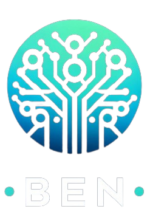Our Service
Discover our services through direct answers to the most frequently asked questions, giving you a clear and comprehensive overview of what we can offer you.

Cybersecurity
Cybersecurity is essential in protecting networks, computers and data against digital threats, encompassing aspects such as network security, information security, application security, and business continuity. It involves the use of various solutions, including firewalls, antivirus, data encryption, and multi-factor authentication, to counter attacks and protect the integrity and confidentiality of information. With threats constantly evolving, organizations must take a proactive approach, regularly updating their security measures and educating their employees on digital security best practices.
Cybersecurity represents a crucial component of modern IT protection, aimed at safeguarding networks, data, and systems against cyberthreats. Through the implementation of measures such as firewall, encryption, and multi-factor authentication, it ensures the confidentiality, integrity and availability of digital information. Faced with rapidly evolving threats, an effective cybersecurity strategy requires constant vigilance, regular updates of security protocols, and continuous education of users on security practices, thus forming the foundation of digital defense against intrusions and computer attacks.
Low-current design and installation
Low current, which uses voltages lower than those of high current, is crucial for specialized systems such as communications, security and automated management in modern buildings. It integrates technologies such as video protection, which enables continuous, secure surveillance of spaces; access control, ensuring safe entry and exit; and fire detection, which prevents the risk of fire thanks to early warnings. In addition, it includes data networks, essential for fast, reliable connectivity, and public address, which enhances communication in large or noisy spaces.
At BenSociety.SARL, our expertise extends to the careful design, rigorous installation and proactive maintenance of these low-current systems. We understand the importance of these technologies in protecting and optimizing both professional and residential environments. That’s why we’re committed to offering innovative, customized solutions that meet the specific needs of each customer, guaranteeing not only their safety but also operational efficiency and maximum comfort. Our aim is to help you create safe, efficient and pleasant spaces, using the most advanced low-current technologies.


Creation of data centers
Creating data centers involves setting up specialized infrastructure to house essential IT equipment, such as servers and storage devices, to process, store and distribute large amounts of data. These facilities provide vital solutions for large-scale data management, ensuring high availability, data security and performance of IT systems. By providing robust, redundant and scalable infrastructure, data centers enable businesses to reduce operational risks, improve energy efficiency and respond quickly to changing market demands. Their design and operation require careful planning, advanced energy and cooling management, and rigorous physical and IT security to ensure optimal business continuity and support technological innovation.
Data centers are essential to meeting the growing demand for data processing and storage in our digital world. Their role goes beyond simple data retention, providing security, reliability and performance, essential for the operation and growth of modern businesses. As data needs increase, investment in this infrastructure becomes crucial, ensuring a strong foundation for technological innovation and market competitiveness.
Creation and configuration of hotspots
Creating and configuring WiFi hotspots are technical processes that help provide wireless Internet access in defined areas, improving connectivity for mobile users. These public or private wireless networks provide a convenient solution for accessing the Internet from mobile devices in places such as cafes, libraries, airports or shared workspaces. In addition to providing essential connectivity, hotspots can improve customer experience, enable business and facilitate access to online information and services. Setting up hotspots requires careful planning to ensure adequate network coverage, strong security to protect users from potential threats, and effective traffic management to maintain high connection speeds. WiFi hotspots have become an indispensable part of modern communications infrastructure, providing flexible and ubiquitous connectivity suitable for an increasingly digital world.


Installation of e-learning platforms
The installation of e-learning platforms represents a strategic step in the digitalization of education, allowing educational establishments and companies to offer accessible and interactive online training. These platforms offer a wide range of solutions to overcome the geographic and temporal limitations of traditional learning, facilitating access to rich educational resources, interactive courses, and real-time assessments. They allow personalization of learning, adapting educational paths to the individual needs of learners, and promote better management of educational monitoring thanks to advanced analytical tools. In addition to increasing student engagement, these platforms facilitate collaboration and exchange between learners and teachers, while providing continuous learning opportunities essential for personal and professional growth in an ever-changing environment.
Website development
Website development encompasses the planning, design, creation and maintenance of websites, providing an essential online presence for businesses, organizations and individuals. This practice meets a multitude of needs, ranging from providing information, to selling products and services, to strengthening brand identity and improving customer engagement. Web development solutions include intuitive user interfaces, optimized user experiences, accessibility across devices through responsive design, and the integration of e-commerce features and multimedia content to meet modern user expectations. .Advanced SEO (Search Engine Optimization) techniques are applied to improve online visibility and attract more traffic to the site. Web development, constantly evolving with the latest technologies, allows entities of all sizes to expand their reach, interact effectively with their audience and support their business objectives in a digital world.
Recognizing the critical importance of a high-performance and engaging website, our team is dedicated to creating websites that not only meet but exceed each client’s specific needs, using cutting-edge technologies and innovative strategies. By entrusting us with the creation of your website, you will benefit from recognized expertise, a personalized approach and a commitment to transform your vision into a successful digital reality, thus propelling your online presence to new heights.

F.A.Q.
Explore key questions about our services, from installing Cybersecurity to building websites, to find out how we can propel your business to digital success.
The types of cybersecurity threats you are most vulnerable to depend on your specific digital environment, but generally include malware (like viruses and ransomware), phishing attacks, denial of service (DoS/DDoS) attacks, and security vulnerabilities in software. Prevention involves regularly updating your systems, using robust security solutions, and continuing awareness of IT security practices.
The advantages of low-voltage power for building security and management are many and significant. Here are a few key points:
1.Increased security: Low-current systems, including camera surveillance, fire alarm systems and access control, play a crucial role in protecting people and property. They enable rapid detection of intrusions or potential hazards, such as fire, helping to prevent accidents and enhance overall building safety.
2.Efficient building management: Low-current technologies facilitate automated building management systems (BMS - Building Management Systems), enabling centralized control of various functions such as lighting, heating, ventilation, and even energy management. This helps optimize operating costs and improve energy efficiency.
3.Enhanced communication: Low-current systems also encompass communication solutions such as public address and telephone systems, which improve internal and external communication. This is essential for day-to-day business operations and coordination in emergencies.
4.Flexibility and scalability: Low-current installations are generally more flexible and easier to modify or extend than high-current systems. This is particularly beneficial in constantly changing environments where new devices may be integrated or configurations may require adjustment.
5.Reduced risk: Because low-current systems operate at a lower voltage, they present a lower electrical risk, making installations generally safer for technicians and building users.
In summary, low-current plays an essential role in modernizing building infrastructures, contributing to safety, operational efficiency and effective communication, while providing an adaptable platform for future technological innovations.
Installing an ERP system has a significant impact on operational efficiency and decision-making within an organization. By centralizing data and processes in a single system, an ERP improves communication between different departments, reduces redundancies and entry errors, and facilitates access to up-to-date and accurate information. This allows decision-makers to get a clear overview of the company's business, quickly analyze performance and make informed decisions based on reliable data. In short, an ERP system optimizes daily operations and supports an agile and responsive business strategy.
Data center design and infrastructure play a crucial role in supporting your long-term growth goals, as well as ensuring data resilience and security. With a focus on scalability, data centers can easily adapt as your business needs change, allowing for the expansion of resources without disrupting existing operations. Robust infrastructure also ensures high availability of services, minimizing the risk of downtime that could impact your operations and reputation. As for security, a well-thought-out design incorporates advanced physical and digital measures to protect against intrusions, cyberattacks, and natural disasters, ensuring the integrity and confidentiality of your critical data. In short, a strategic approach to creating your data center positions you for sustainable growth while preserving security and business continuity.
When creating and configuring WiFi hotspots, it is essential to consider several factors to ensure effective and secure coverage. First, network coverage planning is crucial to ensure a stable and reliable connection in the desired areas, avoiding dead zones. Second, security must be a top priority; Using strong encryption protocols, such as WPA2 or WPA3, and setting up a separate network for visitors can protect both hotspot users and the company's internal network. Finally, it is important to consider network capacity, ensuring that the infrastructure can handle the expected volume of users and traffic, to maintain a quality user experience. By taking these elements into account, you can offer a reliable and secure WiFi hotspot service, meeting the connectivity needs of your users.
When installing e-learning platforms, the most important factor to consider is the accessibility and intuitiveness of the platform for all users, including students and instructors. This involves thoughtful design that facilitates navigation, access to content, and interaction between participants. A platform that is accessible on various devices and has a user-friendly interface ensures that users can focus on learning rather than the technology itself. Additionally, it must be flexible to accommodate diverse teaching needs and support a range of teaching methods, from self-directed learning to interactive sessions. Finally, effective technical support and user training are essential to overcome technical barriers and encourage adoption of the platform, ensuring an enriching and productive learning experience.
When developing a website, the most crucial element to consider is user experience (UX). This includes ease of navigation, fast page loading time, mobile compatibility, and accessibility. A site designed with optimal UX engages visitors more, improves conversion rates, and builds audience loyalty. It is essential that users can easily find what they are looking for and accomplish their goals on the site without frustration. Additionally, integrating a responsive design that adapts to different devices and screen sizes is essential in an increasingly mobile world. Ultimately, careful attention to user experience when developing your website is the key to standing out in a crowded digital space and establishing a strong, memorable online presence.
